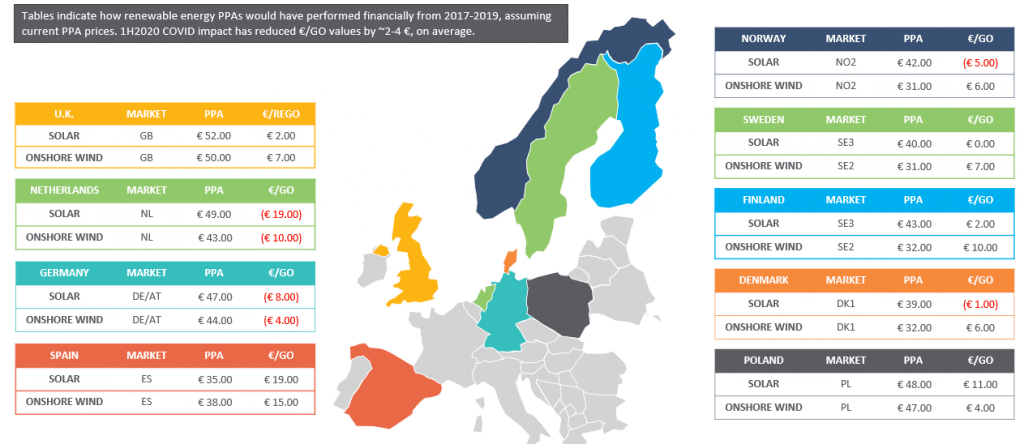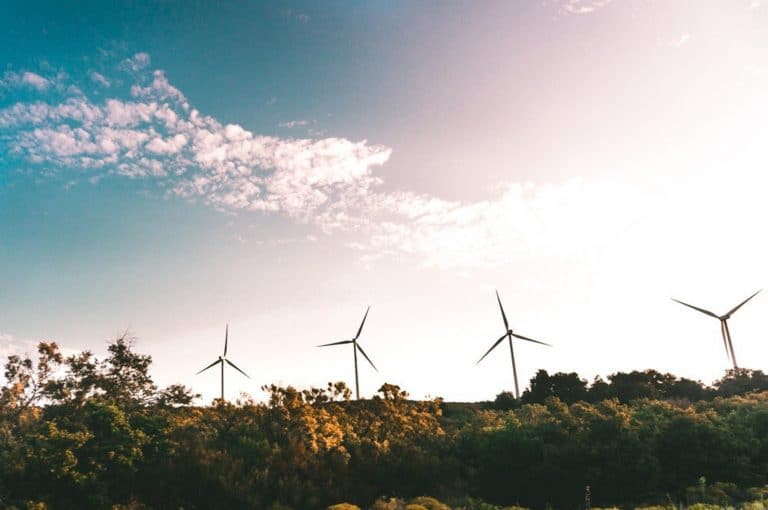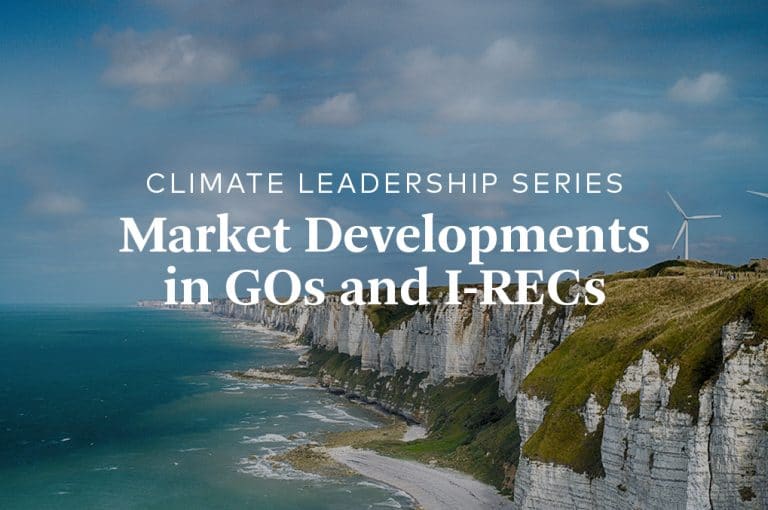Since Germany enacted the first Feed-in Tariff (FiT) for renewable energy back in 1991, the growth of renewables in Europe has been largely dominated by the FiT structure and country-specific renewable mandates. In recent years, political support for FiTs has diminished as the levelized cost of energy from renewables has dropped. As a result, competitive auctions have taken hold and corporate customers have entered the market to directly procure renewables with a goal to achieve more aggressive emissions reduction targets than those set by the European Union’s 2016 revised Renewable Energy Directive (“RED II”, 32% renewable energy by 2030).
The tremendous growth of corporate power purchase agreements (PPA) seen in the U.S. since 2015 appears to be spreading to Europe and other regions as corporates increasingly address their Scope 2 emissions globally. No two markets are alike in Europe, so let’s take a closer look at the available markets and assess which ones represent the best value for corporate PPA transactions.
The European Union is composed of 28 countries and the energy market is diverse and complex. Today, renewable energy PPAs are available to corporate customers in the following countries: the UK, Ireland, Netherlands, Nordics (Denmark, Sweden, Norway, Finland), Spain, France, Germany, and Poland. A recent survey by Bloomberg New Energy Finance on the best PPA prices across the European market found that the best prices for onshore wind exist in Sweden and Spain has the best prices for solar.
However, price surveys alone do not reflect the underlying value represented by these PPAs. Many corporate customers are seeking to gain the necessary level of sophistication to analyze future market scenarios to support informed decision making. 3Degrees believes that the key to success includes realistic and rigorous analytics of market fundamentals affecting wholesale prices now, and in the future. To assess the best value for PPAs, key questions to ask include:
- How are evolving local renewable energy development policies and interconnection guidelines shifting the project development landscape and optimal choices for corporate customers?
- How are EU-based PPAs in Europe considered in the context of cross-border RE100 claims and Guarantee of Origin (GO) registry transfers within AIB-member countries?
- What is the existing fuel mix in each country and how much does the cost of the EU carbon trading scheme (EU ETS) influence wholesale electricity prices?
The answer to the first question above certainly impacts where future energy development is likely to occur and where PPAs will be an option in the future. But the second two questions are more likely to dictate the net value of a PPA to a customer.
As stated in a previous article on U.S. VPPA market fundamentals in the context of COVID-19, the global pandemic has also introduced volatility into the European energy markets this year. Through September, the largest markets in Europe witnessed a reduction in demand ranging from 10% (Germany) to 25% (Spain and Italy) relative to historical seasonal averages. Rising COVID-19 case counts across Europe also signal potential future lockdowns with energy forward contracts weakening in response. We take these black swan scenarios into account when analyzing the value (or cost) potential of VPPAs. While no renewable energy advisor can predict when or how dramatic the downside will be, it’s critical to incorporate such potential impacts in the value analysis of a long-term PPA.
Setting aside the volatility of 2020 for a moment, we can derive potential value of renewable energy PPAs by country with a lookback at historical prices from 2017-2019 and available PPA rates by technology, as shown in the graphic below (values are rounded). The common evaluation metric in this scenario is €/GO, the commodity a corporate purchaser receives in a standard VPPA transaction. Red values in parentheses show a net cost per GO, while values in black show a net positive value.

It is logical to wonder why developers are willing to settle at below market given these potential project values. The answer? It’s the corporate buyer that is taking on the wholesale market price risk, not the developers or financiers. In order to secure fixed revenue streams from a credit-worthy buyer and, in turn secure financing to build the project, developers are willing to forego potential upside seen here to eliminate cash flow volatility for their equity and debt investors.
Additionally, PPA prices are only one part of the equation corporate buyers need to consider. Real value is derived from a careful analysis of not only historical wholesale prices, but also the confluence of factors unique to each market across Europe. We see strong near-term opportunities in certain markets for corporate buyers to achieve their emission reduction goals. As we witness more buyers entering the European PPA market over the coming years, market supply and demand fundamentals will continue to evolve along with the unique value propositions represented by country and renewable energy technology.
3Degrees’ team of experts is monitoring and analyzing the impact of these changes in real time. If you would like to discuss your goals and see how we can help define or execute on your European PPA procurement strategy, please connect with us.




